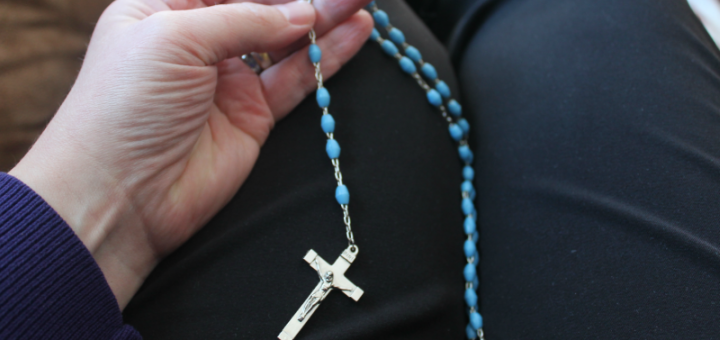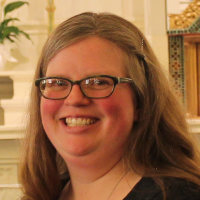
 Copyright 2018 Amanda Villagómez. All rights reserved.[/caption]
I love the end of December/start of January. Like many, the Christmas season provides space for taking stock of my life, reflecting back on what is going well and areas for growth. It is the time where I think about the one little word that will guide my year, as well as the rhythms and routines of my days before our family transitions back to work, school, and daycare.
Nonetheless, the concept of evaluating and setting intentions with the start of a new year is also well known for a tendency to be short-lived. Over time I have discovered tools and practices (mainly self-care) that make it more likely for me to persist with self-improvement goals which really all links to the overall journey towards sanctification. Here is a glimpse into what has proven to benefit me:
Copyright 2018 Amanda Villagómez. All rights reserved.[/caption]
I love the end of December/start of January. Like many, the Christmas season provides space for taking stock of my life, reflecting back on what is going well and areas for growth. It is the time where I think about the one little word that will guide my year, as well as the rhythms and routines of my days before our family transitions back to work, school, and daycare.
Nonetheless, the concept of evaluating and setting intentions with the start of a new year is also well known for a tendency to be short-lived. Over time I have discovered tools and practices (mainly self-care) that make it more likely for me to persist with self-improvement goals which really all links to the overall journey towards sanctification. Here is a glimpse into what has proven to benefit me:
- Start the day in prayer: I set my alarm for 5 AM each day in order to capture some moments of quiet in my house before everyone else wakes up. I begin with reading the daily readings and then continue with spiritual reading, journaling/writing about my faith, or additional prayer.
- Daily Mass: While I have tried to prioritize starting the morning routine early enough so that we do not feel rushed, inevitably there is often at least some sense of frenzy in the mornings after my husband leaves for work and I get our four girls moving, ready and into the van for drop-offs. Daily Mass has become a buffer between the go-go-go of the morning routine and transitioning to a workday. It provides moments to be still, to find peace, and to be inspired. It helps me to have more focus throughout the day.
- Knowing when to pause: I have begun to recognize when I need to pause throughout the day when the sense of feeling overwhelmed rises. Sometimes it is as simple as looking out the window of my office rather than at whatever project I happen to be working on. I clear my mind. God helps put things back into perspective; then I move on with a clearer sense of what matters most and needs to be prioritized.
- Weekly Adoration: This provides additional space to pause, reflect, evaluate, and consider implications on a regular basis. It is a time to lift up my hopes, dreams, and confusions and then try to be still.
- Annual/Almost-Annual Retreat: In the Gospels, Jesus modeled and invited, "Come away by yourselves to a deserted place and rest a while" (Mark 6:31). All of the layers mentioned above are daily or weekly means to do so. However, last year I realized that while these layers made all the difference in my overall sense of calm and peace, sometimes there was still a sense of stress building over time. I decided that it would be beneficial to have a silent retreat, but when I looked at the logistics, it did not seem feasible. Instead, I decided to have a semi-silent self-directed retreat a couple of days prior to a women's conference I was going to attend.
- Catholic Planner: When we are striving to grow, often the outcome will be more effective if we have concrete plans and accountability. Last year I started to use a Catholic Planner. It has two spaces at the beginning for bigger picture plans. "My Path to Sainthood" prompts people to reflect back and look ahead by reviewing achievements from the previous years, thinking about God's blessings, considering inspirations, and areas to focus on leading towards framing goals for the new year. A second section supports developing an intentional plan for Lent. There are simple checkboxes for each day in order to initial fulfilling the commitment. Following is a one-page quick calendar for the year. I use this to mark off completion of something I have committed to strive for daily in the new year (last year it was to pray the Rosary and this year it is to do the Ignatian Examen). Then each week has space for four rituals and four habits with a box to check off for each day. This has been one of the most beneficial to set and track smaller intentions aligned to bigger picture goals. For example, this year my one little word is home, so some of the weekly intentions focus on spending quality time with specific family members or with better supporting specific routines around the house.
Copyright 2018 Amanda Villagómez
About the Author

Amanda Villagómez
Amanda Villagómez is a wife, mom of 6, and teacher educator. On her personal site, she focuses on the beauty of becoming who God created us to be by celebrating the process of change and growth.


.png?width=1806&height=731&name=CatholicMom_hcfm_logo1_pos_871c_2728c%20(002).png)
Comments